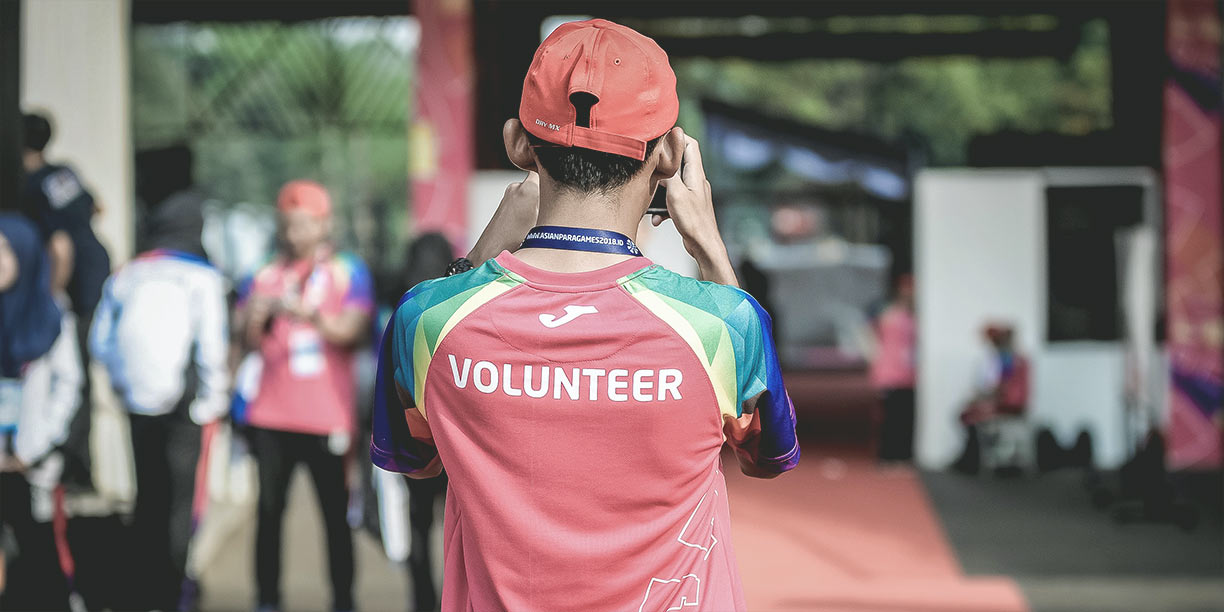The Ultimate Guide to Corporate Volunteer Grant Success

This blog was written in collaboration with the team at Double the Donation, the leading provider of matching gifts, volunteer grants, and other workplace-giving solutions to nonprofits and educational institutions.
Volunteers play a vital role in the growth and sustainability of the social sector. They likely support your organization in behind-the-scenes and mission-facing roles while serving as an extension of your staff in various fundraising and marketing initiatives.
What if you could amplify the impact of their efforts for your cause while tapping into an additional source of nonprofit funding?
With corporate volunteer grant programs, you can.
What Is a Volunteer Grant?
Similar to matching gifts, thousands of companies offer volunteer grants to engage their workforce by supporting eligible nonprofits that matter to them.
When a qualifying team member donates their time to a nonprofit, they can submit a grant request to their employer on behalf of the cause with which they volunteered. From there, the company disburses the funds, meaning your organization secures crucial volunteer support and supplementary revenue for your mission.
In other words, these programs create a win-win-win opportunity for your organization, its supporters, and their employing companies. Your cause receives additional aid, volunteers see their contributions making a greater impact, and partners grow their corporate social responsibility.
However, few nonprofits are currently reaching their full volunteer grant potential, largely due to a lack of program awareness. Luckily, this guide will walk you through everything you need to know to maximize the funding source for your mission.
With a detailed understanding of available volunteer grant programs, practical insights to guide your efforts, and valuable resources to optimize engagement, you’ll be well equipped to bring your workplace giving strategy to new heights.
Volunteer Grant Programs: An Overview
A volunteer grant program (also known as Dollars for Doers, volunteer matching, time match programs, and more) is a leading form of workplace giving. Offered by businesses of all sizes and sectors, these initiatives encourage team members’ community involvement and guide companies’ corporate giving programs.
Here’s how these programs typically work:
- An individual volunteers their time with a nonprofit organization.
- The individual then looks into their employer’s volunteer grant offerings.
- Upon discovering an available program, the individual completes a request form for their company. Note that they may require a timesheet record to verify hours spent volunteering.
- The individual’s employer reviews the request and, if it adheres to the company’s predetermined program guidelines, provides the organization with a monetary grant.
All in all, the volunteer grant process is fairly straightforward—and that’s great news, as the programs are widely available for organizations like yours. Double the Donation’s research indicates that 85% of the top matching gift companies also offer volunteer grants—including over 40% of Fortune 500 companies. Since 80% of participating companies supply between $8 and $15 per volunteer hour, the programs can provide a hefty chunk of change.
Though volunteer grant programs should play a part in any team’s healthy corporate engagement plan, these continue to be an underutilized resource for many organizations. However, once you learn more about the opportunity and incorporate volunteer grants throughout your supporter management and outreach efforts, you’ll be well on your way to maximizing a new funding source.
The Impact of Volunteer Grants for Nonprofits
When integrated successfully into a nonprofit’s strategy, volunteer grant programs can have widespread benefits for the organization—not to mention its volunteers. These initiatives offer an opportunity to monetize volunteer hours, providing an additional source of corporate revenue. As a result, the supplementary funds can support the organization’s operational and programming needs, fostering more sustainable efforts in the long run.
For the supporter, the grant availability from their employer can be a tangible incentive that inspires heightened nonprofit engagement. Supporters may even be more willing to donate their time when they know it will result in a check that benefits the organization’s bottom line. Plus, participation in such a program may lengthen the volunteer engagement period and keep supporters returning for additional opportunities.
By providing individuals with new and exciting ways to get involved, volunteer grants and other workplace giving programs can guide the relationship beyond a traditional contribution and aid donor stewardship.
Common Volunteer Grant Criteria to Know
Each volunteer grant company establishes eligibility criteria that outline its available program. In other words, for an individual’s time to qualify for a corporate grant, their engagement must meet specific guidelines within a set policy.
From the nonprofit’s perspective, it helps to understand the criteria to consider when identifying eligible individuals. Though it can vary from one employer to the next, volunteer grant policies typically encompass the following:
- Qualifying types of employees: Companies typically specify which employees qualify for volunteer grants. Depending on the program, eligible groups may include full-time, part-time, or retired employees. This portion of the policy may also indicate whether there are opportunities for teams of employees in addition to individual volunteer grants.
- Qualifying types of nonprofits: Organizations get frequently segmented by mission type to determine qualifying causes. Some companies may select a mission or sector that aligns with the business’s values (for example, clean water organizations) as eligible for grants. In contrast, others might exclude certain types of organizations from their programs (the most common exceptions being religious and political groups). Others still may credit volunteer hours for any 501(c)(3) organization.
- Volunteer hour minimums: There may be a minimum number of hours that a volunteer must reach for their time to qualify for a grant. When the individual is aware of this minimum-hours criterion, it can spark heightened engagement with your cause.
- Submission deadlines: To remain eligible for a volunteer grant, a supporter must complete the outlined request process (most often, this involves submitting a form online) before the established deadline. As many companies’ deadlines fall at the end of the year during which the volunteer event occurred, volunteer grants can make an excellent addition to your Giving Tuesday and year-end fundraising strategy.
A company’s volunteer grant guidelines also provide information regarding the funding amount or payout structure of the program. Many employers offer a set value per hour a team member volunteers (like $20 per hour for a five-hour volunteer event would result in a $100 grant).
On the other hand, some companies establish a threshold-based system in which a team member can request a lump sum after reaching a predetermined time quota (like a $200 grant after 10 hours of volunteering).
Regardless of the form these programs take, volunteer grants are a uniquely valuable revenue source that can bring your organization’s volunteer and corporate engagement strategies to new heights.
6 Companies with Standout Volunteer Grant Initiatives
As corporate philanthropy continues to evolve, a growing number of businesses are developing such programs every day. Among the thousands of companies providing volunteer grants worldwide, a few standout examples include the following:
1. The Walt Disney Company: Disney (and its subsidiaries: Hulu, Marvel, ABC, ESPN, FOX, and more) encourages employees to donate their time by offering “VoluntEARS” grants of up to $2,000 per person. When a team member volunteers between 10 and 150+ hours with an organization in a calendar year, they qualify to request grants of up to $2,000. Plus, the company offers additional “VoluntEARS of the Year” grants to recognize exceptional employees and the causes they support.
2. Microsoft: Microsoft (the leading contributor of volunteer grants and matching gift funds) demonstrates its commitment to employee philanthropy by offering $25 per hour volunteered—with no minimum threshold. Since initiating the match program in 2005, Microsoft employees have volunteered over two million hours, totaling an estimated $7.7 million in corporate revenue.
3. Verizon: Verizon’s Volunteer Incentive Program (also known as VIP) encourages employee engagement by rewarding their commitment to community service. Team members who volunteer 50 hours with a single organization qualify for a grant of $750, and each employee has the opportunity to support up to two nonprofits per year through this program.
4. Bank of America: Bank of America encourages employees to request $500 grants for 50 volunteer hours or $1,000 grants after reaching 100 hours of service through its two-tiered volunteer grant program. Plus, this initiative is open to active and retired team members alike, and associates have until Jan. 31 of the following year to complete their request.
5. Adobe: Adobe’s volunteer grant program values individual volunteer time at $25 per hour, with a minimum requirement of only a single hour. Plus, the company incentivizes team-wide engagement with its team volunteer grants. For every group of 10 employees who volunteer for three-plus hours, Adobe grants $1,000 to the respective organization.
6. Walmart: Walmart and Sam’s Club encourage employees to get involved in the company’s Volunteerism Always Pays (or VAP) program. Each company grant offers $10 per volunteer hour, up to $1,000 each. Individuals can request two grants per organization for up to two organizations, totaling a maximum of four volunteer grants per team member each year. Meanwhile, groups of associates can request team VAP grants between $500 and $5,000 when they partake in qualifying peer-to-peer fundraising events.
How to Identify and Pursue Additional Volunteer Grant Opportunities
One of the most crucial elements in any workplace giving strategy involves the identification of eligible supporters—and there are too many programs to keep track of each one. Thus, consider the following recommended practices to scale and sustain your volunteer grant initiatives:
- Collect employment data within the volunteer onboarding process. The more employment information you have on file for your volunteers, the simpler it will be to pinpoint those who work for companies that provide volunteer grants. Adjusting your registration or onboarding forms to include an employer field is a quick and easy way to gather this information.
- Look for crossover possibilities with matching gift donors. There’s a significant overlap between companies that match donations and those that offer volunteer grant programs. An excellent place to begin your volunteer grant outreach is with supporters already engaged in workplace giving. For donors who have yet to take on a volunteer role, this is also an excellent way to inspire engagement with your nonprofit from a new perspective.
- Empower existing volunteers to research their companies’ giving programs. Encouraging supporters to delve into their employers’ corporate philanthropy policies or reach out to their human resource representatives can uncover hidden opportunities to support their favorite causes through volunteer grants. Many companies include this information in an employee handbook or other internal materials.
- Utilize 360MatchPro by Double the Donation. Simpler and more effective than manual research, Double the Donation’s workplace giving database maintains a wealth of information regarding thousands of companies’ volunteer grant programs. Their 360MatchPro Volunteer Hub makes it easy to provide your supporters with actionable steps for harnessing these corporate volunteer programs that grow mission support. Plus, if you’ve already integrated 360MatchPro into your Classy fundraising platform, all you need to do is plug the database widget into your volunteer engagement resources.
Want to see these best practices in action? Check out this example of an organization with a leading volunteer grant marketing strategy:
The Leukemia & Lymphoma Society’s Volunteer Grants Page
This page is prominent on the LLS website, making it easy for every online visitor to get involved. Here’s what the page does well to communicate about the volunteer grant opportunity:
- Provides a brief overview of the volunteer grant opportunity for employees and retirees—including a statistic that showcases the prevalence of the programs.
- Offers step-by-step instructions for individuals interested in participating in a volunteer grant initiative.
- Embeds Double the Donation’s comprehensive database search tool, allowing supporters to quickly and easily determine their eligibility for the programs.
- Supplies essential information about the organization, such as its tax ID number and mailing address required for many corporate submission forms.
- Encourages individuals to reach out to a dedicated volunteer grant team with any unanswered questions.
A strategy like this empowers your team to collect employment data, uncover eligibility information in seconds, and guide volunteers through the request process. Meanwhile, you can repurpose the data you collect to tailor your workplace giving outreach accordingly.
Read Next: Uncover Partnership Opportunities with Your Nonprofit DataNext Steps for Volunteer Grant Success
Volunteer grants present an invaluable opportunity for nonprofits, having the power to elevate supporter engagement and secure essential funding. By leveraging these programs, organizations can unlock the full potential of volunteers.
However, the key to unleashing this potential starts with widespread awareness, as many of your program-eligible volunteers likely have yet to learn their employers offer such initiatives. Once equipped with this knowledge, they can take the necessary steps to access grant funding on behalf of your organization.
Remember, the simpler you can make it for supporters, the higher the chances they’ll participate. Equipping your staff and volunteers with the right tools can go far to increase program accessibility and set your team up for corporate giving success long into the future.
Copy Editor: Ayanna Julien

Uncover Corporate Partnership Opportunities with Your Nonprofit Data
Subscribe to the Classy Blog
Get the latest fundraising tips, trends, and ideas in your inbox.
Thank you for subscribing
You signed up for emails from Classy
Request a demo
Learn how top nonprofits use Classy to power their fundraising.



